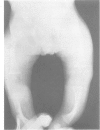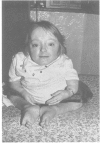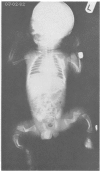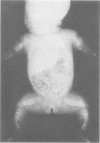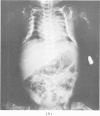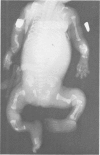Abstract
A study was carried out in the United Kingdom of patients with severe osteogenesis imperfecta (OI), born with fractures to normal parents, in order to determine recurrence risks. A total of 105 cases from 98 families survived the perinatal period and 60 cases from 57 families were stillborn or died during the first week of life. The majority of the perinatal survivors correspond to the overlapping group of Sillence type III and sporadic type IV OI. In 40 of these, the radiograph at birth was available and in 37 it showed a characteristic appearance similar to that described previously for type III OI. The other three cases had radiological type IIB OI at birth and died before 26 months of age. The patients with perinatally lethal OI were subdivided on radiological appearance into Sillence type IIA (30 cases, described in the previous paper), type IIB (12 cases from 11 families), and type IIC (three cases from three families), and in five cases from three families the radiological appearance was the same as that of the 37 perinatal survivors described above. Ten cases from 10 families were not classified because their radiographs were unavailable. To analyse the empirical recurrence risks, patients were grouped according to radiological appearance at birth. Those with a type III-like pattern numbered 42 cases and they were grouped with the other cases of severe deforming OI who survived the perinatal period, for whom no x ray at birth was available, making a total of 107 cases. Taking one affected child per family as the proband, there were 98 probands. They had 146 sibs, of whom 10 were affected, giving an empirical recurrence risk of 6.9%. This is consistent with the disease arising as a new dominant mutation in about three quarters of families and as a recessive in about one quarter in this heterogeneous group. It is reasonable to give a recurrence risk of up to 25% in cases with parental consanguinity and a risk of 4.4% in cases with unrelated parents. Fifteen patients (14 probands) with Sillence type IIB OI had 13 sibs, one affected, giving an empirical recurrence risk of 7.7%. The parents were consanguineous in three families and the evidence for autosomal recessive inheritance for the majority in this group is probably stronger. The three patients with type IIC OI had three healthy sibs and the 10 unclassifiable perinatally lethal cases had 22 sibs, all normal. The radiological appearance at birth predicts prognosis to some extent; essentially, the better the bone morphology and mineralisation the longer the survival.
Full text
PDF

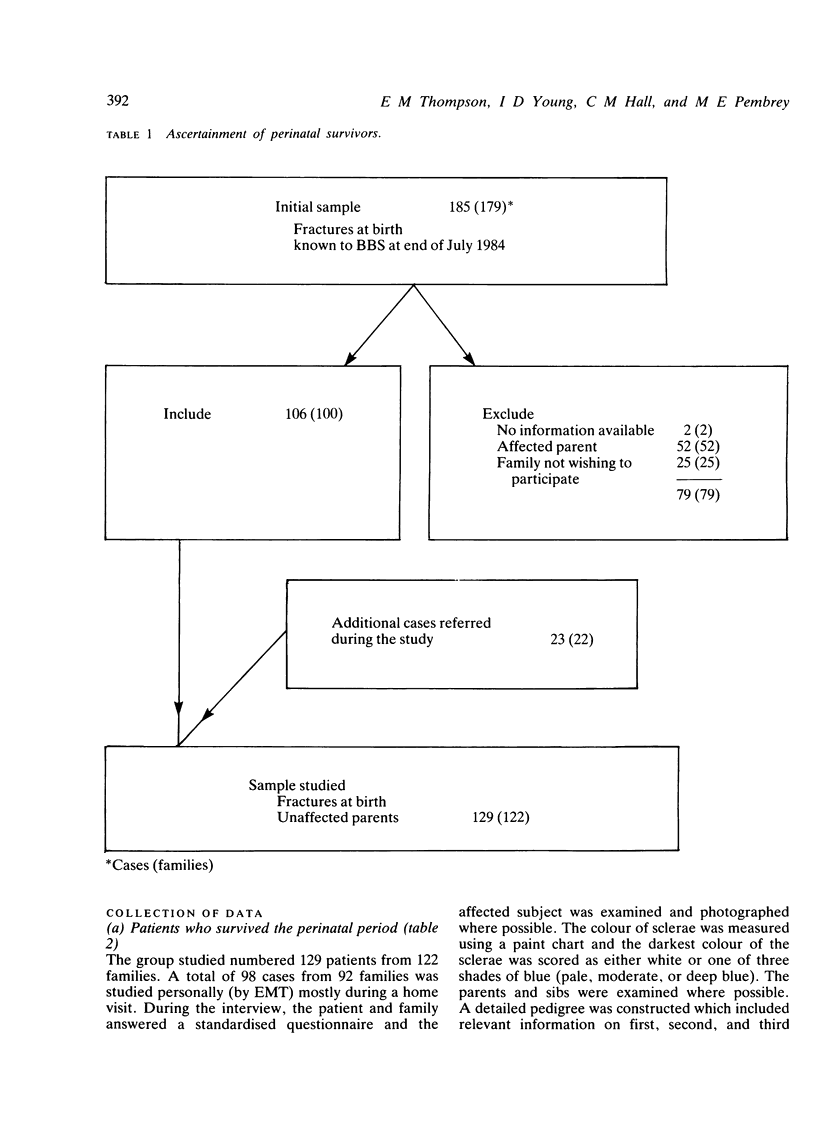
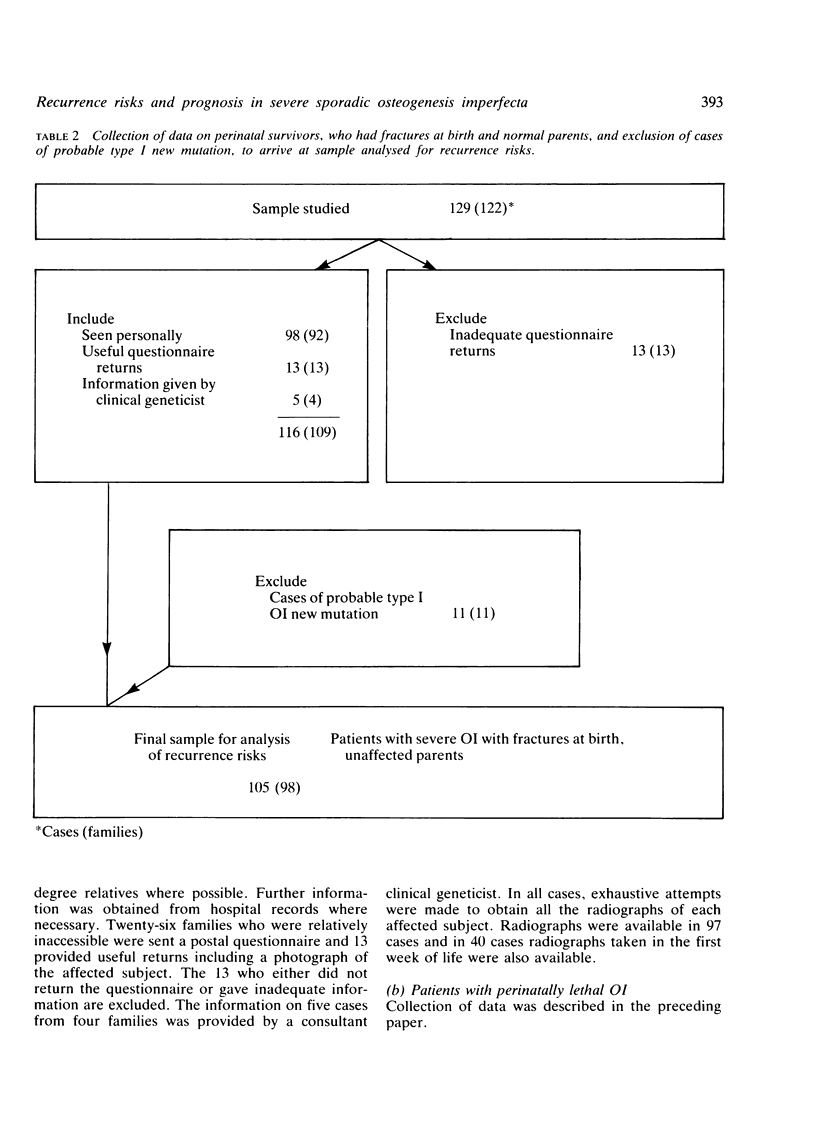
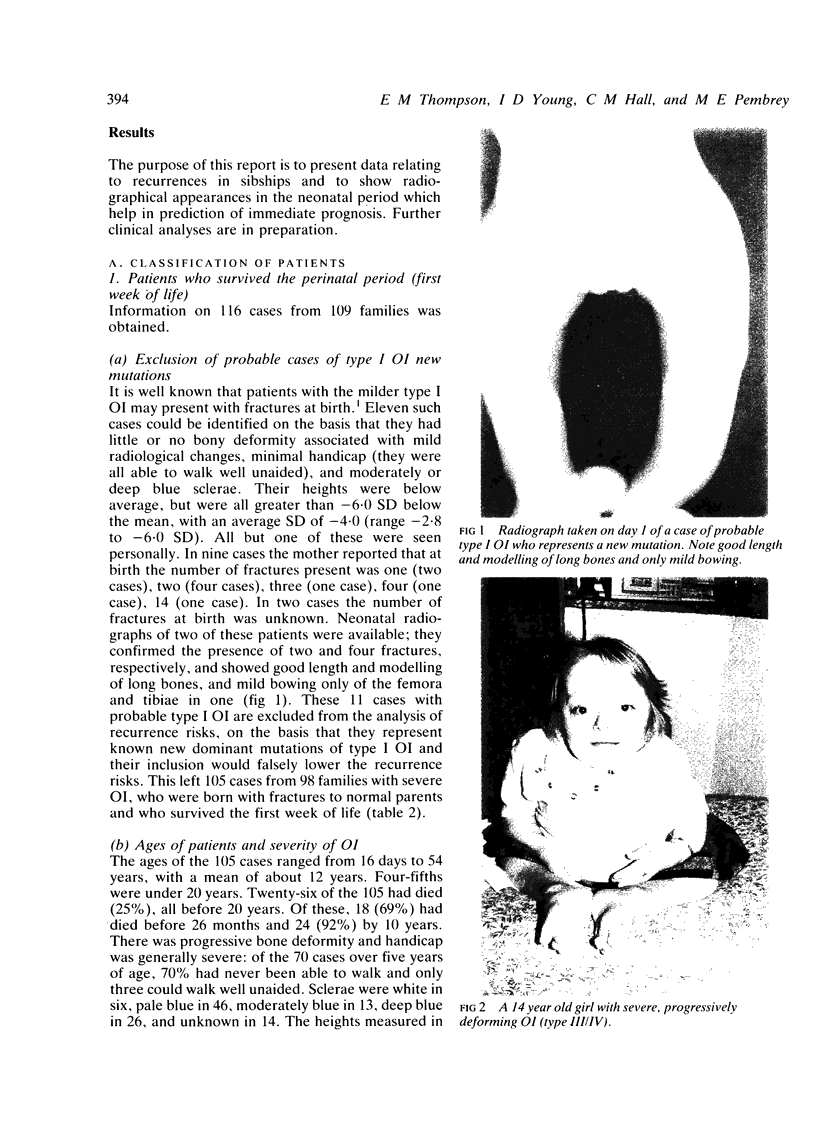
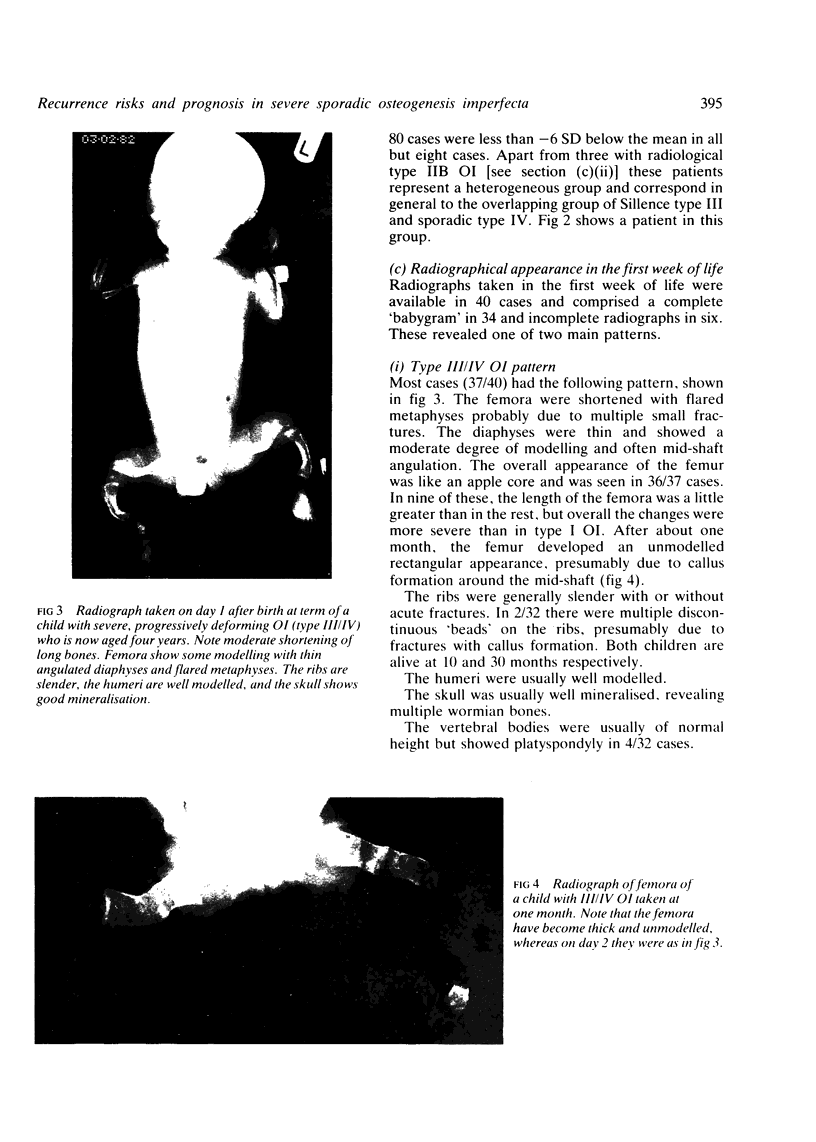


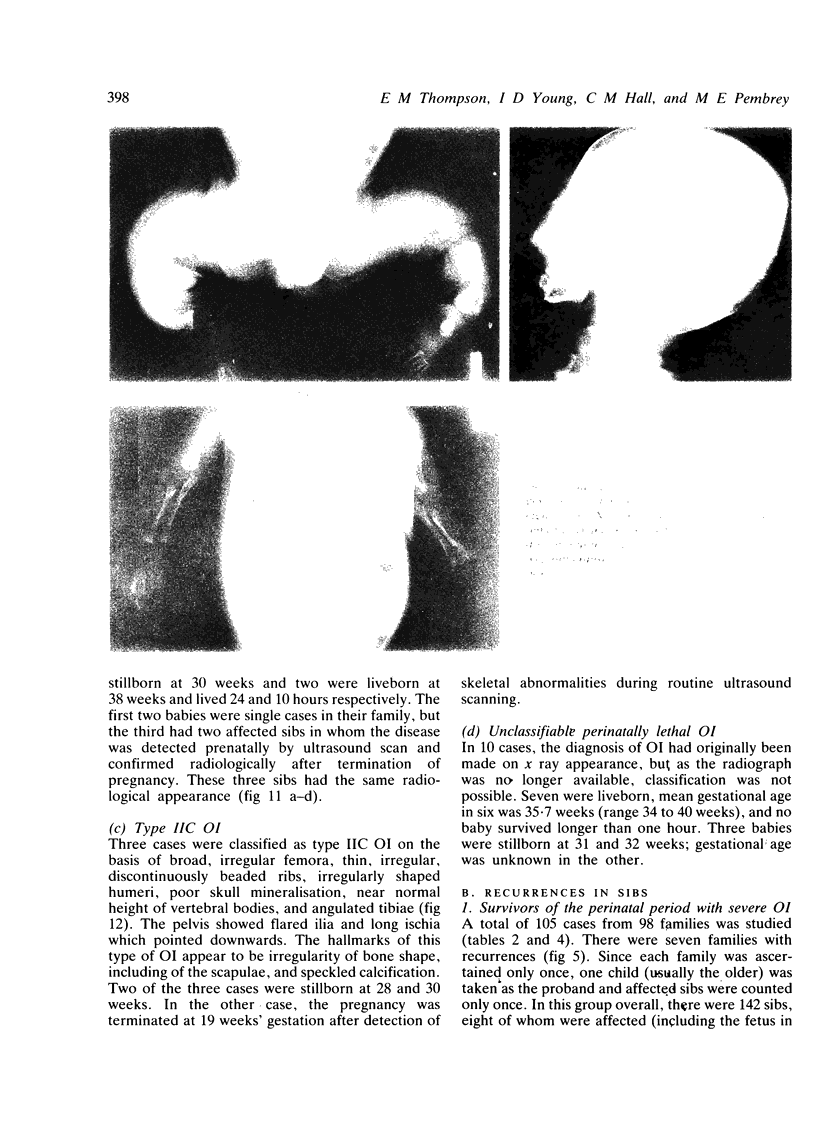

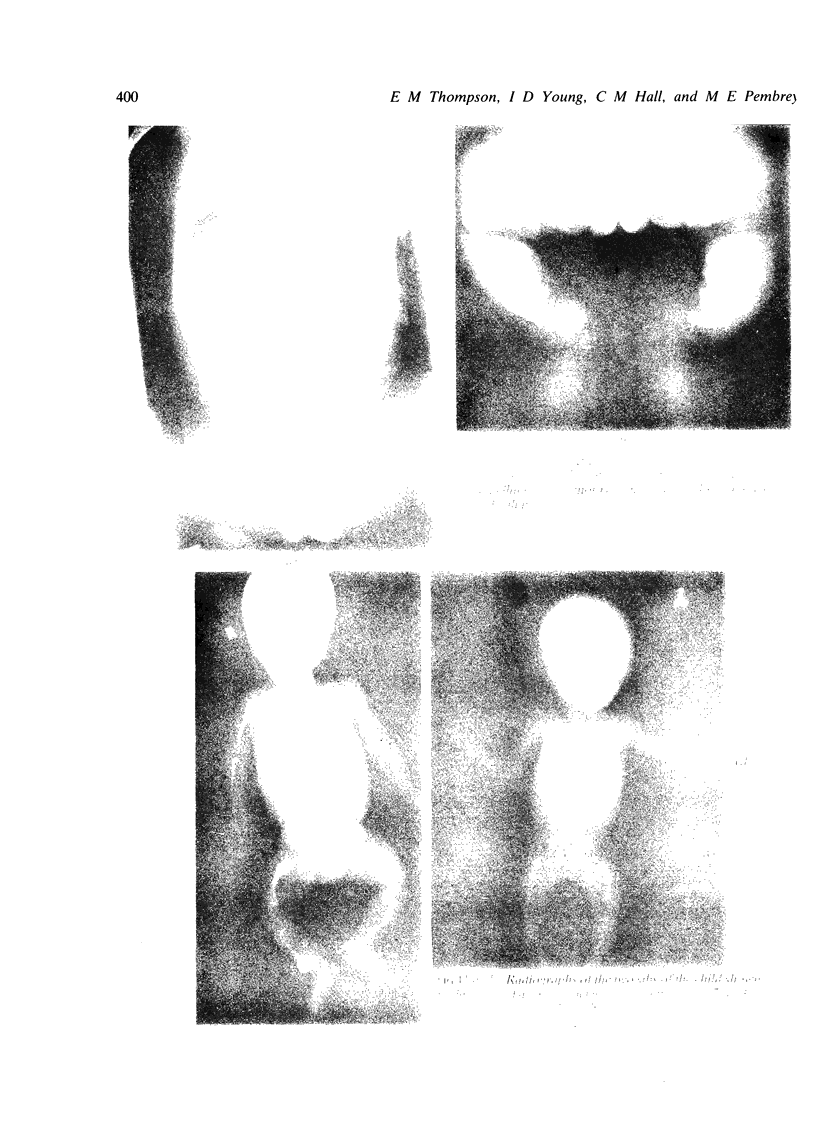



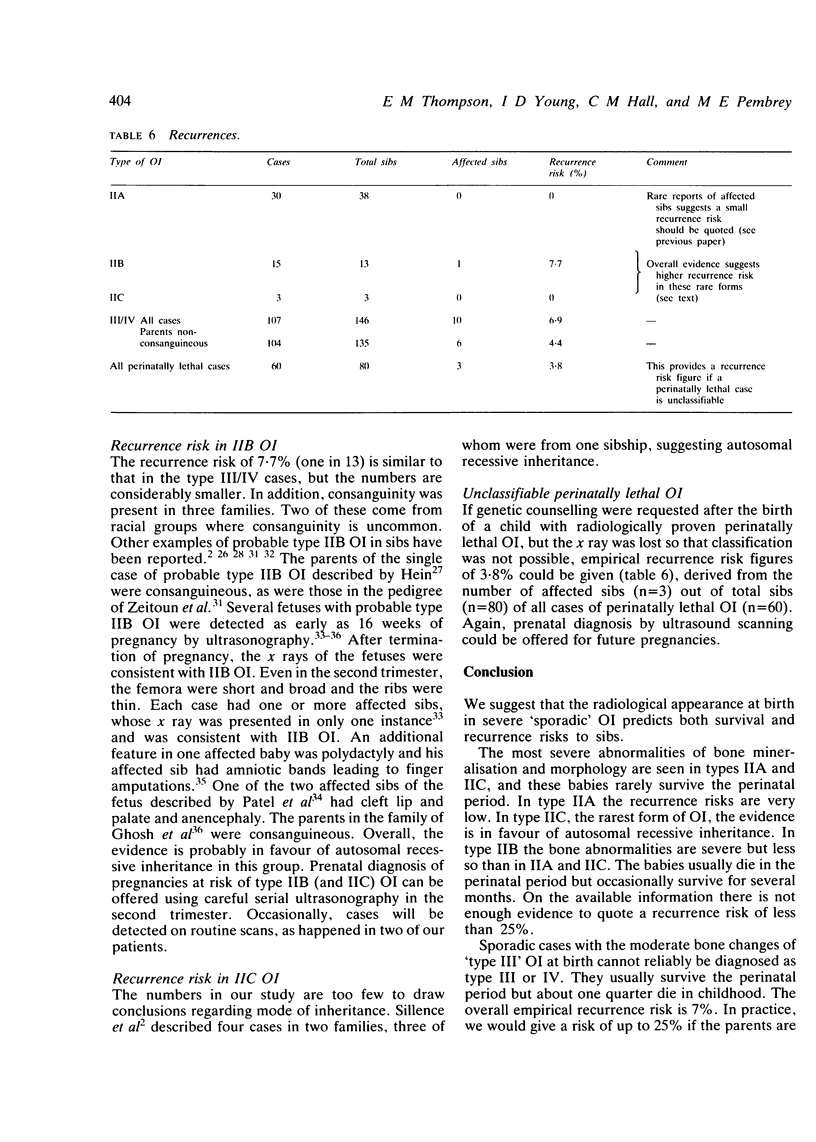

Images in this article
Selected References
These references are in PubMed. This may not be the complete list of references from this article.
- Beighton P., Spranger J., Versveld G. Skeletal complications in osteogenesis imperfecta. A review of 153 South African patients. S Afr Med J. 1983 Oct 1;64(15):565–568. [PubMed] [Google Scholar]
- Braga S., Passarge E. Congenital osteogenesis imperfecta in three sibs. Hum Genet. 1981;58(4):441–443. doi: 10.1007/BF00282834. [DOI] [PubMed] [Google Scholar]
- Elejalde B. R., de Elejalde M. M. Prenatal diagnosis of perinatally lethal osteogenesis imperfecta. Am J Med Genet. 1983 Feb;14(2):353–359. doi: 10.1002/ajmg.1320140215. [DOI] [PubMed] [Google Scholar]
- GOLDFARB A. A., FORD D. Osteogenesis imperfecta congenita in consecutive siblings. J Pediatr. 1954 Mar;44(3):264–268. doi: 10.1016/s0022-3476(54)80315-5. [DOI] [PubMed] [Google Scholar]
- Nicholls A. C., Osse G., Schloon H. G., Lenard H. G., Deak S., Myers J. C., Prockop D. J., Weigel W. R., Fryer P., Pope F. M. The clinical features of homozygous alpha 2(I) collagen deficient osteogenesis imperfecta. J Med Genet. 1984 Aug;21(4):257–262. doi: 10.1136/jmg.21.4.257. [DOI] [PMC free article] [PubMed] [Google Scholar]
- Patel Z. M., Shah H. L., Madon P. F., Ambani L. M. Prenatal diagnosis of lethal osteogenesis imperfecta (OI) by ultrasonography. Prenat Diagn. 1983 Jul;3(3):261–263. doi: 10.1002/pd.1970030314. [DOI] [PubMed] [Google Scholar]
- Shapiro F. Consequences of an osteogenesis imperfecta diagnosis for survival and ambulation. J Pediatr Orthop. 1985 Jul-Aug;5(4):456–462. doi: 10.1097/01241398-198507000-00014. [DOI] [PubMed] [Google Scholar]
- Sillence D. O., Barlow K. K., Cole W. G., Dietrich S., Garber A. P., Rimoin D. L. Osteogenesis imperfecta type III. Delineation of the phenotype with reference to genetic heterogeneity. Am J Med Genet. 1986 Mar;23(3):821–832. doi: 10.1002/ajmg.1320230309. [DOI] [PubMed] [Google Scholar]
- Sillence D. O., Barlow K. K., Garber A. P., Hall J. G., Rimoin D. L. Osteogenesis imperfecta type II delineation of the phenotype with reference to genetic heterogeneity. Am J Med Genet. 1984 Feb;17(2):407–423. doi: 10.1002/ajmg.1320170204. [DOI] [PubMed] [Google Scholar]
- Sillence D. O., Senn A., Danks D. M. Genetic heterogeneity in osteogenesis imperfecta. J Med Genet. 1979 Apr;16(2):101–116. doi: 10.1136/jmg.16.2.101. [DOI] [PMC free article] [PubMed] [Google Scholar]
- Sillence D. Osteogenesis imperfecta: an expanding panorama of variants. Clin Orthop Relat Res. 1981 Sep;(159):11–25. [PubMed] [Google Scholar]
- Smith R., Francis M. J., Bauze R. J. Osteogenesis imperfecta. A clinical and biochemical study of a generalized connective tissue disorder. Q J Med. 1975 Oct;44(176):555–573. [PubMed] [Google Scholar]
- Spranger J., Cremin B., Beighton P. Osteogenesis imperfecta congenita. Features and prognosis of a heterogenous condition. Pediatr Radiol. 1982;12(1):21–27. doi: 10.1007/BF01221706. [DOI] [PubMed] [Google Scholar]
- Spranger J. Osteogenesis imperfecta: a pasture for splitters and lumpers. Am J Med Genet. 1984 Feb;17(2):425–428. doi: 10.1002/ajmg.1320170205. [DOI] [PubMed] [Google Scholar]
- Stephens J. D., Filly R. A., Callen P. W., Golbus M. S. Prenatal diagnosis of osteogenesis imperfecta type II by real-time ultrasound. Hum Genet. 1983;64(2):191–193. doi: 10.1007/BF00327125. [DOI] [PubMed] [Google Scholar]
- Wynne-Davies R., Gormley J. Clinical and genetic patterns in osteogenesis imperfecta. Clin Orthop Relat Res. 1981 Sep;(159):26–35. [PubMed] [Google Scholar]
- Young I. D., Harper P. S. Recurrence risk in osteogenesis imperfecta congenita. Lancet. 1980 Feb 23;1(8165):432–432. doi: 10.1016/s0140-6736(80)90988-5. [DOI] [PubMed] [Google Scholar]
- ZEITOUN M. M., IBRAHIM A. H., KASSEM A. S. Osteogenesis imperfecta congenita in dizygotic twins. Arch Dis Child. 1963 Jun;38:289–291. doi: 10.1136/adc.38.199.289. [DOI] [PMC free article] [PubMed] [Google Scholar]



